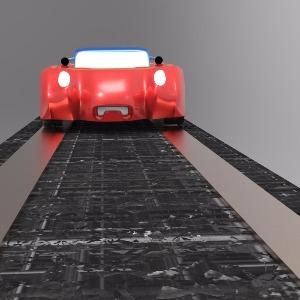
ChargeGo - Road to renewable energy by SAADITHYA
Please find below the
Finalist Evaluation
Judges'' comments
Please review the following Judges' comments:
Judge 1:
This is a proposal with great imagination, but the technological and economic feasibility is questionable.
Judge 2:
Very novel idea which could have substantial impacts. However, I have doubts that such a solution could work given the cost for building the required infrastructure. I'd assume that the infrastructure for this solution would be significantly more expensive than building aerial lines (e.g. for buses) which has mostly been discontinued given reduced flexibility and high costs. Furthermore, I imagine the phase-in of this technology to be challenging.
Judge 3:
The idea is certainly worthwhile exploring. Product design and engineering is critical for making it work, like providing the right dimensions to be driven on, ensuring the safe operations of the piezoelectric circuit, reducing transmissions losses. Clearly the system would need to have connections to an AC grid with transformer as long stretches of DC at low voltage would be very inefficient. It cannot be too thin as it could easily expose the continuously conductive layer below.
Judge 4:
I think this is an interesting proposal. The author could focus more on what would be done for the scaled prototype and feasibility study, who the partners could be etc.
Semi-Finalist Evaluation
Judges'' ratings
| • | Novelty: | |
| • | Feasibility: | |
| • | Impact: | |
| • | Presentation: |
Judges'' comments
Judge 1:
This is an interesting variation on the charging on the go issue. My first reaction is to advise the authors to decouple it from nuclear - the energy source is entirely irrelevant to the proposal. Now, they should address three significant issues: 1. the infrastructure requirements for laying lanes with these strips - costs may be significant 2. the need to drive exactly on the strip - i.e. some kind of automated vehicle would be needed 3. the advantages compared to inductive charging proposals
Judge 2:
This is an interesting proposal. The concepts for preventing the pedestrians to be electrocuted are interesting, although this issue may still be significant. The use of nuclear power seems somewhat separate from the main proposal - electric power from any source would suffice. In fact, hydro or solar power would have even less environmental impact. I would therefore suggest not focussing as much on nuclear as the power source. The proposal would also be strengthened by more information on the technology required to convert the DC power from the road to charge the batteries, and what challenges may be faced. Any information on any proofs-of-concept would also be helpful.
 Aadhithya Sujith Nov 5, 2017 11:08 | Proposal creator Thanks for valuable feedback & suggestions, I have modified my proposal incorporating the suggestions & answering the questions raised. Please find the summary of changes made for your quick reference. As suggested by Jury I have decoupled nuclear energy from the main proposal and renamed it to "ChargeGo - Road to renewable energy" because electric power from any source would suffice the proposed technology. I have added the following information under, what are the other key benefits. The advantages compared to inductive charging proposals
The infrastructure requirements for laying lanes with these strips - costs may be significant under What actions do you propose?
I have made 3D CAD models and animated it to show the proposed technology in action for better understanding of how the strip can be laid on existing roads. The need to drive exactly on the strip? The ChargeGo will be available in different lanes, so this is as simple as driving in the lane, this will most interestingly improve lane discipline because this will encourage people to drive on the lane bringing more discipline to the road improving road safety also. The track in most of the electric car chassis remain the same. Also this will help autonomous cars to a great extend, the autonomous cars can also rely on these conductive strips to stay on the road within the track. I am also trying to develop a scaled prototype to showcase a live demo of the project in action in the form a video, however it is still in WIP, hopefully if this project makes into finalist I can submit it in the finalist video. Thanks & regards Aadhithya +91 8547256736 |